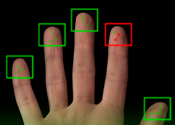Quality Assurance
CODIS—Quality Assurance
The DNA Identification Act of 1994 required the formation of a panel of distinguished professionals, from the public and private sectors, to address issues relevant to forensic DNA applications. This panel, titled the DNA Advisory Board (DAB), first convened in 1995. An early mission of the DAB was to develop and implement quality assurance standards for use by forensic DNA testing laboratories. The scope was quickly expanded to include forensic DNA databasing laboratories as well. The DAB fulfilled this role, recommending separate documents detailing quality assurance standards for both applications.
The Quality Assurance Standards for Forensic DNA Testing Laboratories and the Quality Assurance Standards for DNA Databasing Laboratories were first issued by the Director of the FBI in October 1998 and April 1999, respectively. Both documents have become benchmarks for assessing the quality practices and performances of DNA laboratories throughout the country. When the DAB’s statutory term expired, it transferred responsibility for recommending revisions of these quality assurance standards to the Scientific Working Group on DNA Analysis Methods (SWGDAM).
The DNA Identification Act of 1994 also required that the FBI Laboratory ensure all DNA laboratories that are federally operated, receive federal funds, or participate in the National DNA Index System (NDIS) demonstrate compliance with the standards issued by the FBI. Typically, documentation of a laboratory’s compliance with a stated standard has been measured through an audit process. Such audits have been performed by forensic scientists, either internal or external to the laboratory, and serve to identify compliance with established standards.
The audit document defines and interprets each standard, with added discussion points clarifying the criteria necessary for compliance. Additionally, the document is structured such that criteria, which overlap between the FBI-issued standards and the corresponding American Society of Crime Laboratory Directors/Laboratory Accreditation Board (ASCLD/LAB) elements, share a consistent interpretative view.
Active with the September 2011 audit documents and for audits conducted in accordance with the Quality Assurance Standards effective September 1, 2011, separate audit documents will be used for forensic and databasing laboratories.
08.16.10



